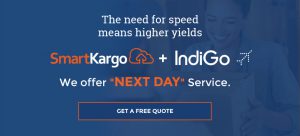Is there an e-commerce company that doesn’t keep a close eye on Amazon? E-commerce organizations are always looking for a peak day, as well as information about their logistics and technical skills. Although many online shops do not have physical stores, almost every online retailer has a warehouse. It doesn’t matter what you sell, from batteries to clothing, motor parts to pharmaceuticals – if a consumer knows a local source that can always supply fast, they’ll come back when they’re ready to shop again.
Amazon: The Top Achievers in the Logistic Industry
According to the eMarketer article, “the next 14 biggest digital retailers will make up just 31%” of the US e-commerce sales. Only roughly 30% of all other e-commerce businesses in the United States are left. Companies in the logistics industry are watching Amazon to see what they will do next. It is anticipated that
Amazon will account for about 40% of all US online sales
What is impressive is Amazon is now 3rd behind USPS and UPS and ahead of FedEx for US Parcel volume in the United States – and they continue to invest in the logistic of their business. Furthermore, Amazon partners with other airlines to fly Amazon parcels for themselves and their partners, increasing e-commerce competition.
Best Ways to Compete with Amazon
When you sell on your own website and ship from your warehouse or even a retail store, how can you compete with Amazon?

- Immediate Delivery: Provide the same level of immediate delivery, which for many online businesses today means next day delivery, but Amazon Prime Now is increasingly giving same-day delivery.
- Brand Promises: So, if you run an e-commerce company you may be thinking it’s a long task to compete. True, but competing and winning against Amazon requires focusing on your brand and its promises. Make your customers truly champion you and your brand.
- Innovation: E-commerce businesses typically employ people who are fairly tech-savvy. They use their smartphones, tablets, computers, and even kiosks to make transactions. Make the internet infrastructure as smooth and intelligent as possible so that customers can make purchases and payments quickly.
- Speedy Shipping: Ensure your shopping and buying processes are simple and fast. Additionally, ensure that you have detailed shipping policies and procedures that clients can simply locate and comprehend. I read and follow Neil Patel, and in his blog about competing with Amazon, he had a brilliant suggestion concerning shipping. His concept of “doing something radical with shipping” was brilliant.
- Lower Shipping Charges: Because shipping charges vary greatly among carriers, it is advantageous for business owners to shop around for the best deal. So, to swiftly discover the cheapest choice without delaying order fulfillment, use an optimized platform or application.
SmartKargo: Offering a Delivery Approach Comparable to Amazon
At SmartKargo, innovation is in our DNA, and we believe in being innovative when it comes to shipping services for e-commerce businesses. We can assist e-commerce enterprises in the India, Mexico & United States in becoming more like Amazon Prime. We work with local airlines to deliver e-commerce products in one to two days – it’s easy for us because our airline partners are already flying to all of the country’s major population centres. This means you can compete with Amazon Prime’s 2-day shipping model, allowing you to focus on providing a terrific online experience for your important customers. It’s a fantastic deal that gives you airspeed at ground rates.

It may appear difficult to compete with Amazon, but you can do so and succeed. Make sure you concentrate on your core consumers and provide a basic and straightforward customer experience. Take risks where you can, and remember that the customer journey does not end with the purchase e-commerce delivery can be a crucial distinction for your customers.


